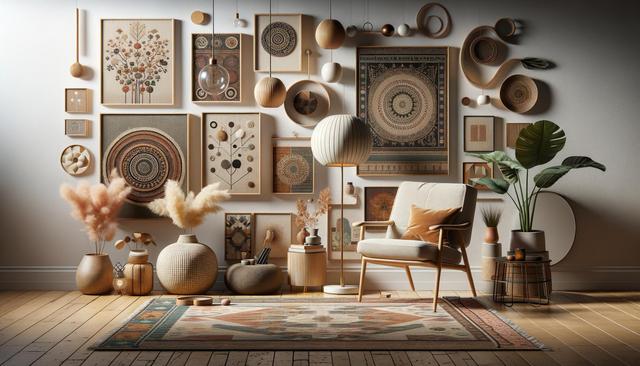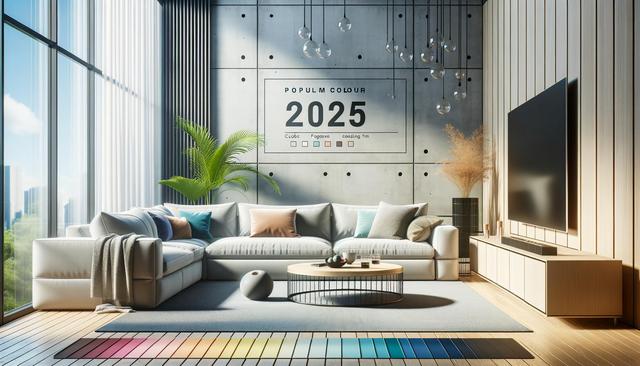Understanding Home Decor Styles
Home decor is a personal expression of style that can range from minimalistic to eclectic. Each decor style offers a unique perspective, guiding how furniture, colors, accessories, and layouts come together to form a cohesive space. Popular styles include modern, industrial, traditional, Scandinavian, bohemian, and farmhouse. Identifying your preferred aesthetic helps streamline the selection of decor products, ensuring a harmonious and satisfying environment.
For instance, modern decor is characterized by clean lines, neutral color palettes, and functional furniture. Scandinavian design emphasizes simplicity, natural elements, and light-filled spaces. On the other hand, bohemian styles embrace rich textures, layered textiles, and a mix of patterns and colors. Exploring these styles can be an inspiring journey, often influenced by cultural elements, travel, and lifestyle preferences. Adapting to a particular style doesn’t mean rigid conformity—many homeowners blend elements from multiple styles to create a home that truly reflects their identity.
Some key decor categories you’ll find across styles include:
- Wall art and mirrors
- Lighting fixtures
- Area rugs and floor coverings
- Decorative pillows and throws
- Indoor plants and planters
Prices vary widely depending on the quality and uniqueness of the pieces. For example, wall art can range from $30 for a simple print to several hundred dollars for a hand-painted canvas. Knowing your budget and prioritizing key pieces can help you personalize your space without overspending.
Furniture and Functional Decor
Furniture plays a central role in home decor, serving both aesthetic and functional purposes. Whether furnishing a new home or refreshing an existing one, selecting the right pieces is essential to defining your living space. Sofas, coffee tables, bookshelves, and bed frames are common investment items, often chosen with long-term use in mind. While functional decor—such as storage solutions, room dividers, and multi-purpose furniture—adds practicality without compromising style.
Functional furniture has become particularly popular in urban settings where space is limited. Items like under-bed storage drawers, extendable dining tables, or ottomans with hidden compartments offer solutions that enhance both storage and design. Furniture prices can range from budget-friendly to luxury. For example:
- Sofas: $300 to $2,000+
- Coffee tables: $100 to $800
- Bookshelves: $70 to $500
- Storage benches: $100 to $600
Investing in quality pieces that align with your style and space needs can enhance comfort and functionality. When planning purchases, consider room size, layout, and purpose to avoid cluttering or under-furnishing your home.
Lighting: Setting the Mood
Lighting is a powerful tool in home decor, influencing both ambiance and functionality. From statement chandeliers to subtle wall sconces, the right lighting can transform a room’s atmosphere. Task lighting, ambient lighting, and accent lighting each serve different purposes and can be layered to create depth and warmth in a space.
Popular lighting options include:
- Table lamps and floor lamps
- Pendant lights
- Recessed ceiling lights
- LED strip lighting
- Wall-mounted sconces
Prices for lighting fixtures can vary based on design and material. A basic floor lamp might cost around $50, while designer pendant lights can reach upwards of $600. Smart lighting systems, which allow remote control and automation, are also gaining popularity. These systems can start around $100 and go up depending on features.
When choosing lighting, consider the room’s purpose. For example, bright white light is ideal for kitchens and home offices, while warm-toned lights create a cozy feel in bedrooms and living rooms. Also, incorporating dimmers and smart bulbs adds flexibility for setting the mood throughout the day.
Textiles and Soft Furnishings
Textiles add texture, color, and comfort to any home decor scheme. Items such as curtains, cushions, rugs, and bedding play a critical role in defining the look and feel of a room. They can be easily swapped out to reflect seasons, moods, or trends, making them a versatile tool in interior styling.
Key textile categories include:
- Throw pillows and blankets
- Curtains and drapes
- Area rugs
- Bedding sets
- Upholstery fabrics
These products are available across a broad price spectrum. Decorative pillows can range from $15 to $100, while area rugs start around $80 and can exceed $1,000 for handmade, high-quality pieces. Bedding sets are typically priced between $50 and $300 depending on material and brand.
Soft furnishings are also a great way to introduce patterns and colors without making permanent changes. For example, a neutral sofa can be brightened with colorful cushions or layered throws. Likewise, curtains can frame a window and add height to a room when hung correctly. Paying attention to fabric quality and care instructions ensures that your textiles remain beautiful and functional over time.
Art, Plants, and Decorative Accessories
Finishing touches like artwork, indoor plants, and decorative accessories bring personality and warmth to a space. Wall art adds visual interest and can serve as a focal point, while plants introduce natural elements that improve air quality and promote well-being. Accessories such as candles, vases, and sculptures tie together a room’s color scheme and style.
When curating decorative pieces, consider the following tips:
- Use odd-numbered groupings for visual balance
- Mix materials like wood, metal, and glass for texture
- Incorporate personal items like travel souvenirs
- Keep scale and proportion in mind
Plant decor has seen a surge in popularity, with options ranging from small succulents (starting at $5) to tall indoor trees ($50 to $200+). Art prices vary based on medium and origin—print reproductions are often under $50, while original artworks can range from $100 to several thousand dollars.
Decorative accessories are where you can truly let your personality shine. Whether you prefer minimalist ceramic vases or intricate metal sculptures, these items offer flexibility and creativity. Rotating accessories seasonally or during holidays can also keep your home feeling fresh and inviting throughout the year.
Conclusion: Curating Your Unique Home Style
Exploring the diverse world of home decor is both exciting and rewarding. With an array of products and styles available, there’s something to suit every taste, budget, and space. Whether you’re drawn to sleek modern lines, rustic farmhouse charm, or vibrant bohemian flair, your home can reflect your personality through thoughtful decor choices.
By understanding the fundamental elements—furniture, lighting, textiles, and decorative accessories—you can create a cohesive and inviting space. Keep in mind that home decor is an evolving process. Start with key pieces, build gradually, and allow your style to grow over time. With careful planning and a creative eye, you can design a home that feels uniquely yours, offering both comfort and inspiration every day.


